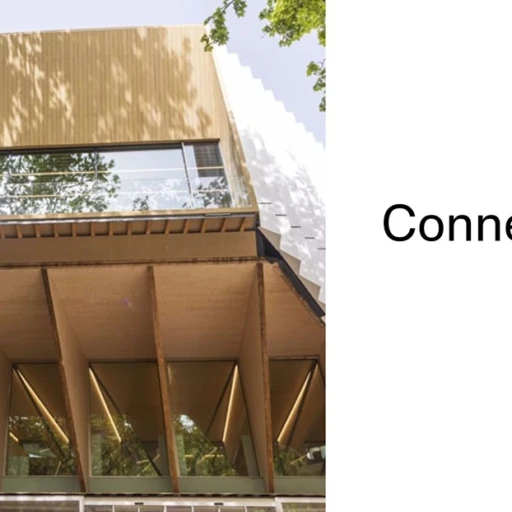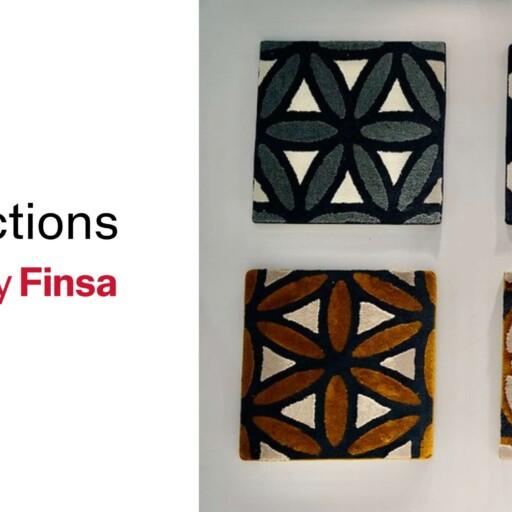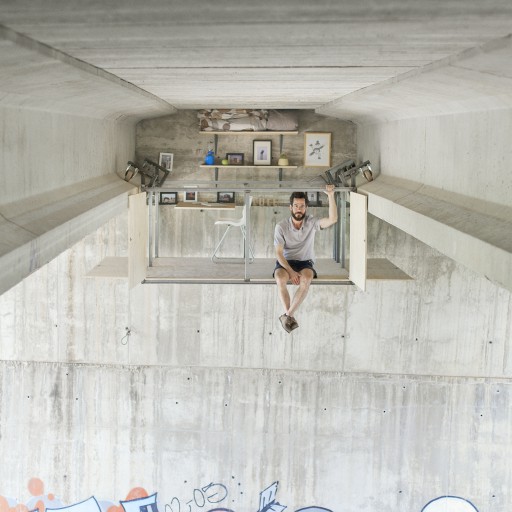The architecture and interior design of offices and workspaces have changed significantly since the coronavirus crisis. In the past four years, five workplace design trends have been established that you can still apply in 2024 and well into 2025.
Activity-based working: designing the workplace according to activities
An office where informal meetings between workers are common shouldn’t be configured the same way as one where tasks requiring high concentration are performed, right?
The conceptual framework of activity-based working provides an answer to each situation, combining productivity and collaboration to design the workplace based on the real needs of the staff. This way, spaces can be created for video calls without disturbance or areas with high tables to encourage spontaneous meetings, thus avoiding occupying rooms intended for larger groups.
Under this model, private offices disappear, and environments emerge that offer versatility for various tasks depending on the concentration level or the number of people involved.

Design proposals for activity-based working: PODS or NOMADIC WORKSTATIONS will be your great allies.
Utilitarianism and functionality return to the office
According to a Steelcase study, 33% of people report greater engagement when working in a place they like. What characteristics are valued in these spaces? Privacy, well-being, and collaboration, along with connectivity and flexible furniture, are key considerations for office design.
This connection with utilitarianism takes us from including slides to reclaiming more contained and balanced spaces. The WOW effect has worn off, and corporate culture is reflected through the workplace layout and interior design as a tool to attract and retain talent. Aesthetics still matter, yes, but only if it serves the purpose and work methodology of the company within that office.
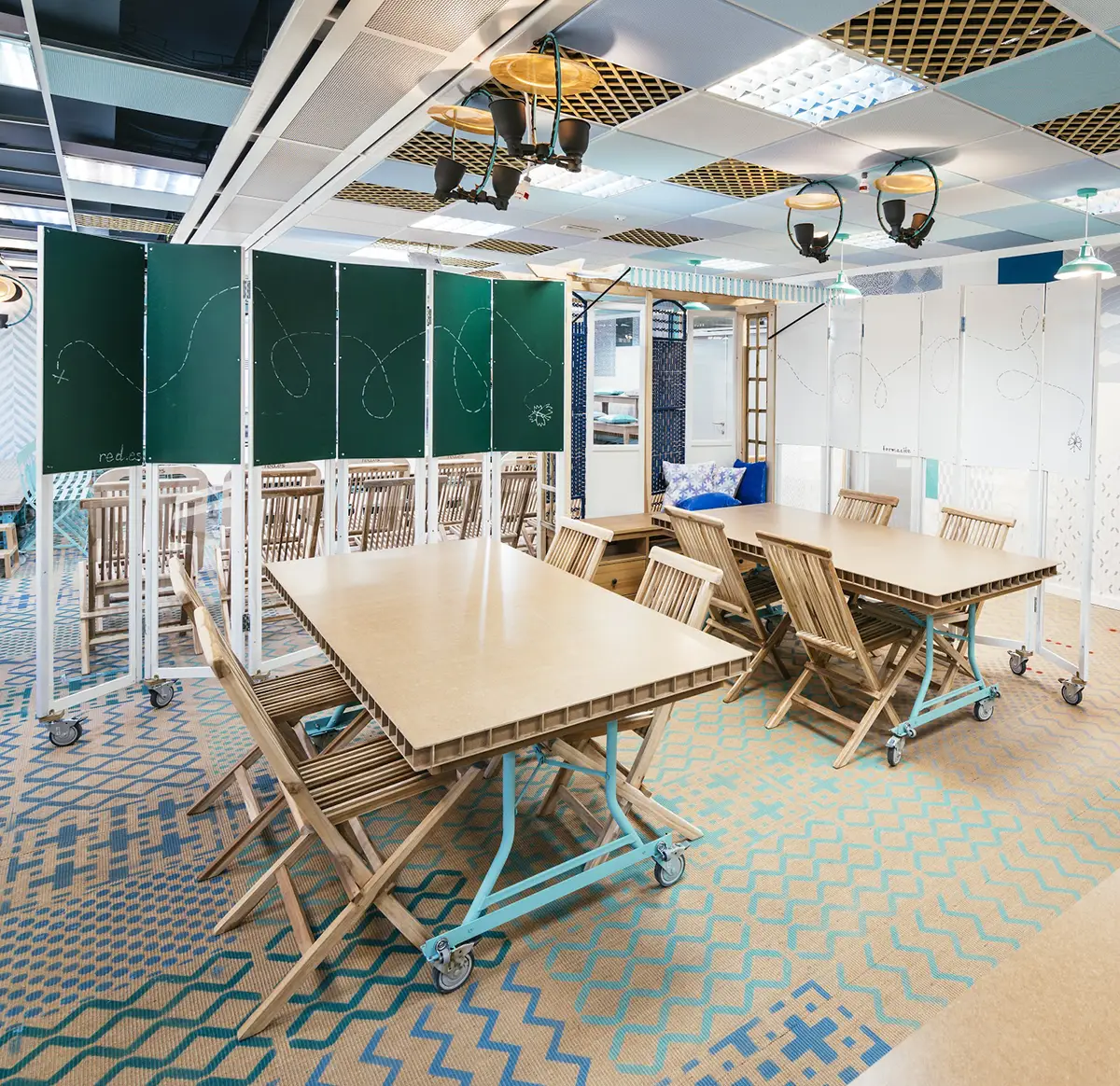
Design proposals for functional offices: EQUIPPED HALLWAYS.
Cafeterias as the social hub of workspaces
Cafeterias, canteens, and office kitchens have often become the center of office projects. They are no longer just places to rest, have a coffee, or eat; they also serve as meeting points for staff or external personnel. Thus, they serve as entry points to connect with society, as seen in the banking and finance sectors, where this open model is widespread.
Workspitality, which gained traction in 2022, fits into this trend toward the “hotelization” of the office, where rest areas or cafeterias promote socialization and idea exchange. For example, the new Google headquarters in London resembles a hotel more than a corporate office.
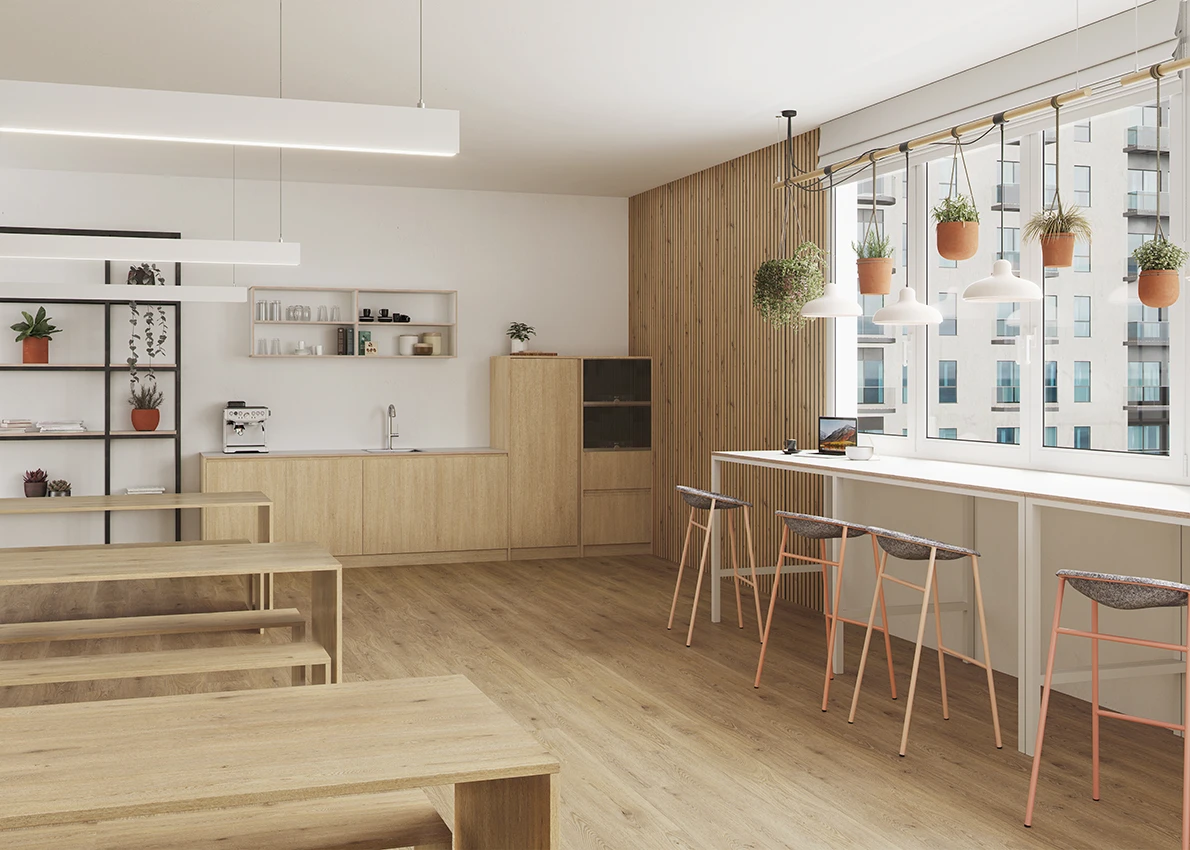
Design proposals for functional offices: OFFICE KITCHENS and CANTEENS.
Offices that enhance employee experience
Employee experience will be another driving trend in workspace interior design, closely linked to talent retention. Such is its importance that 92% of companies plan to improve employee experience in 2024.
Stress, lack of privacy, or inability to concentrate are the three main reasons for not going to the office, which should be optimized through interior design and workspace architecture. Additionally, neurodivergence should be considered when designing the workplace. Behavioral psychology professionals work closely with office interior designers and neuroarchitecture to reveal how, for instance, people with ADHD need both open spaces and private rooms.
To address these issues, dynamics that facilitate inclusion can be applied. One such dynamic is designing the office with hybrid work in mind, providing video conferencing rooms for different numbers of people to make all staff feel equally included.
Health is another crucial aspect to improve the experience. Biophilic design and the presence of nature are indispensable features. Certifications like WELL ensure that the environment promotes well-being.
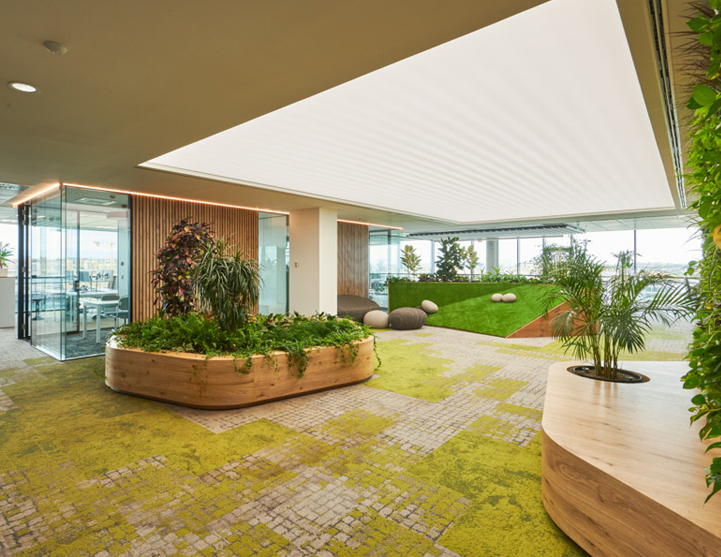
Design proposals for offices that enhance employee experience: AGORAS.
Small workspaces: less is more
Given the high cost per square meter and the usual need for silence to promote concentration, small workspaces are the ideal solution. Minimal rooms or soundproof booths offer flexibility and minimize risk for an office that could be complemented by the sub-trend of corporate coworking.
Corporate coworking will grow by 32% over the next five years, and 65% of companies are considering this model. Why? Because it allows access to interesting locations, adaptability to expand or reduce workstations, or to offer staff the possibility to work elsewhere for a season by opening offices in another city.
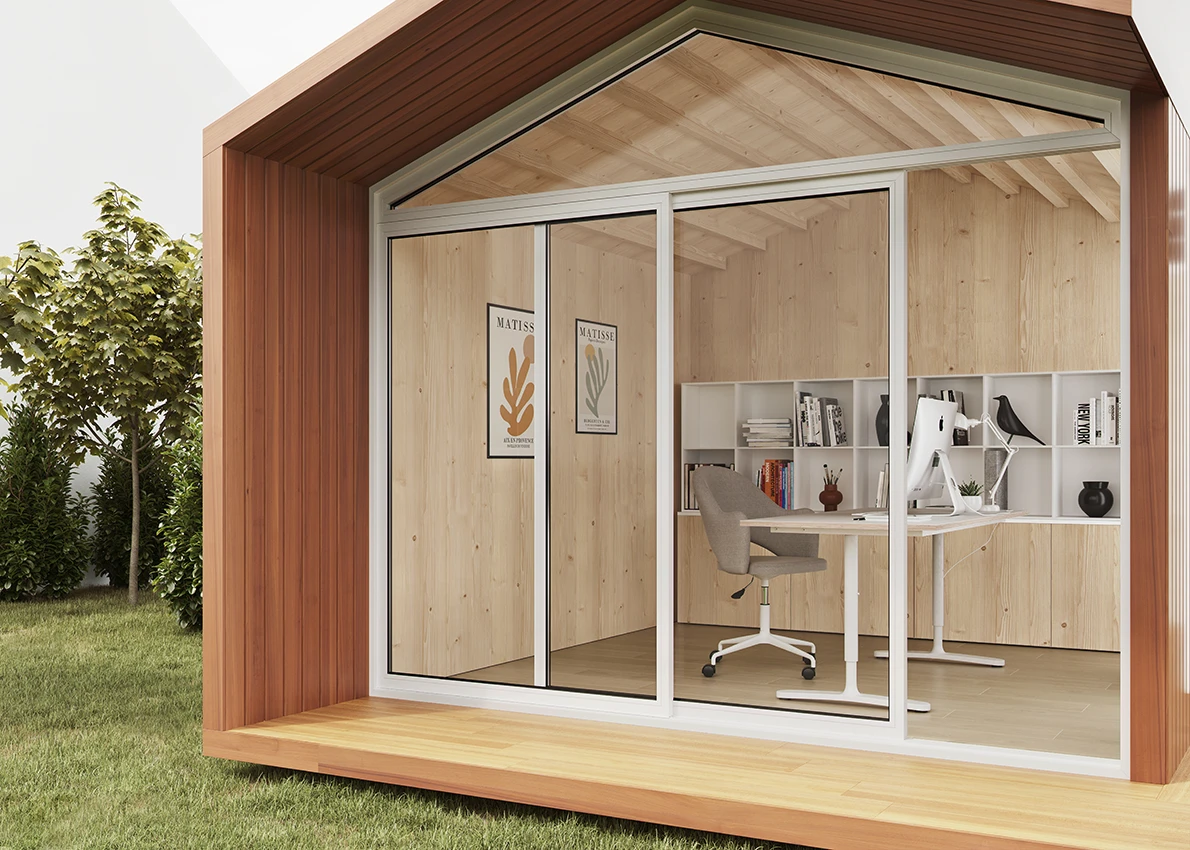
Design proposals for micro-offices: PODS and FINISHES FOR SMALL WORKSPACES.
If you enjoyed this report on office design trends, don’t miss our selection of wood finishes and solutions for five workspaces.


